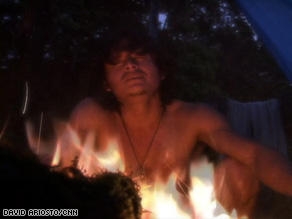
The words are memorized, passed down from an aging generation to a new group of tribal youths.
"The song means a lot to me," Mezua told CNN, the fire's dying embers splashing a red glow across his face. "But I don't know what it means."
It's not just the song but their language and culture that Mezua and his tribe fear losing as deforestation from logging and cattle ranching threatens the rainforest that is part of their identity.
But recent trends could usher in a welcome reversal for Mezua and his tribe. Rural workers are migrating toward cities in search of jobs, and forests are re-emerging where now abandoned farms and cattle ranches once flourished, according to a 2009 report from the U.N. Food and Agriculture Organization.
Such "secondary" forests in the tropics can rapidly grow in areas once cleared for logging and cattle ranching if left alone, said Joseph Wright, senior scientist at the Smithsonian Tropical Research Institute in Panama. "After about 20 years (of being left alone) the forest will be about 60 feet tall," he said.Deforestation and re-growth in Panama may reflect a snapshot of a bigger picture involving rainforests throughout Central America. With more than three-quarters of people across the region now living in urban centers, the United Nations expects rural farming and population growth -- the usual culprits behind deforestation -- to dwindle.
Some call forest re-growth a victory in the climate crisis. Trees consume carbon dioxide, a greenhouse gas that traps heat within the Earth's atmosphere. "Biology is the only way we can remove carbon dioxide out of the atmosphere," Wright said. "There's no way to do it faster than to let tropical forests re-grow on abandoned land."
Others say threats to primary forest, or original jungle, is the real issue and that its loss can cause irreparable damage to the surrounding ecosystem.
"Places in Colombia, places in Central America, places in Mexico, places in many of the Andean countries are the last bunkers, the last bastions of hundreds of unique species in each place," Lider Sucre, director of Panama's Museum of Biodiversity, told CNN.
"If you replant 10 times as much forest but you lose these last large pockets, you lose a huge amount of biodiversity forever and ever."
The value of primary and secondary forests is a debate heating up within the environmental community as new woodlands begin to wrap themselves around barbed-wire fences that still dot cattle-driven landscapes across Panama.
Rainforest clash in Panama signals larger debate

Comments
No response to “Rainforest clash in Panama signals larger debate” Post Comments (Atom)
Post Comments (Atom)
Post a Comment |
Post a Comment